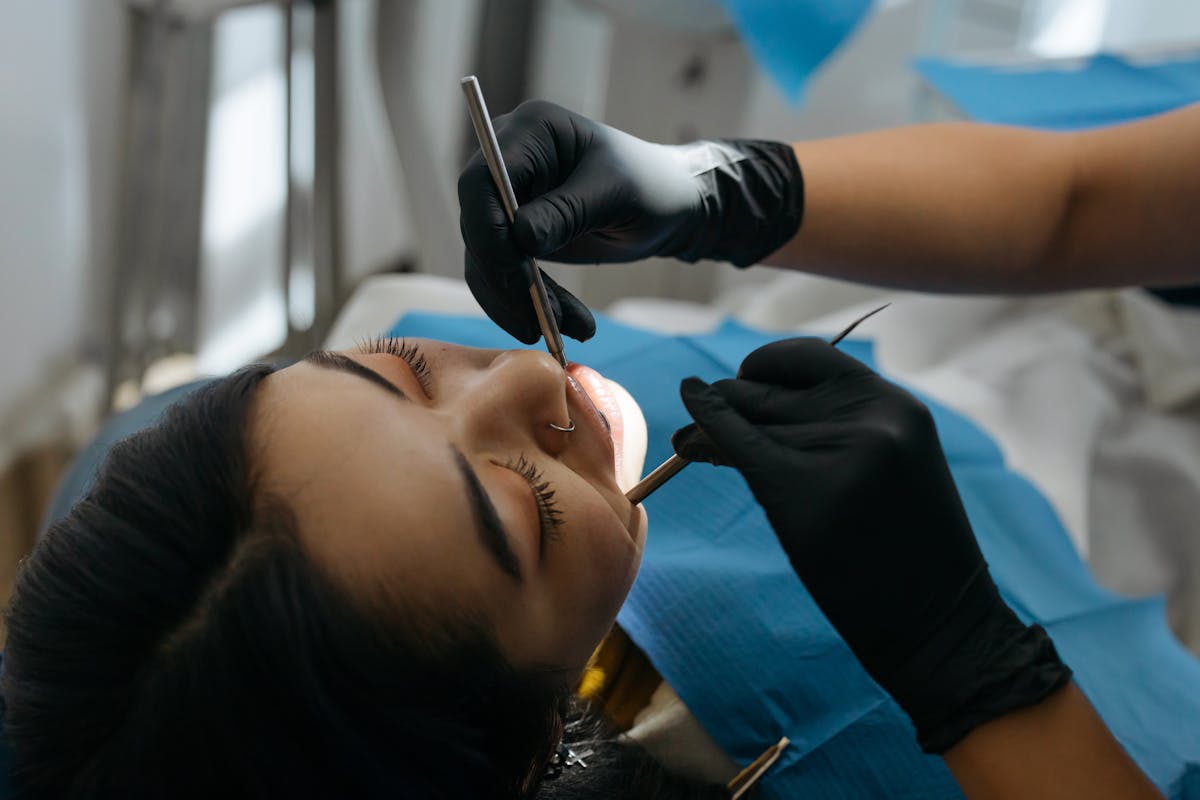Do you have teeth alignment problems and would like to fix them? Are you considering different treatment options and trying to decide which one would fit your needs best?
Orthodontic care plays a crucial role in maintaining proper bite function and long-term dental health. Invisalign is one type of treatment that can help align your teeth, restore your smile, and improve your oral health.
What Is Invisalign?
Invisalign treatment is an orthodontic approach that straightens your teeth and helps you correct bite and alignment problems. It uses clear aligners that are custom-made to fit your teeth. These transparent trays apply gentle pressure to move your teeth into their ideal position.
The trays are replaced periodically to match your teeth’s progress throughout the entire Invisalign treatment plan.
Unlike traditional braces, these clear aligners can be removed for eating and brushing, but you’ll still need to wear them for 20 to 22 hours each day. The overall duration depends on factors such as your age, bite complexity, and commitment to wearing the aligners.
What Is a Crossbite?
A crossbite is a type of misalignment where your teeth don’t close properly. Instead of the upper and lower teeth lining up, the upper teeth sit inside the lower teeth when your mouth is closed. This condition can affect one or several teeth.
There are two types of crossbite:
Posterior crossbite – occurs when the back upper teeth sit inside the lower teeth.
Anterior crossbite – happens when the upper front teeth fall behind the lower teeth, often causing visible misalignment and functional issues.
Can Invisalign Fix a Crossbite?
Yes, Invisalign can fix crossbite in many cases. Invisalign aligners are effective at treating mild to moderate crossbites by gently guiding the teeth into better alignment. The key is early diagnosis and consistent aligner use.
However, severe cases of crossbite correction may require a different approach, such as traditional braces or a rapid palatal expander to widen the upper jaw before aligner therapy can begin.
Your orthodontist will determine the right method based on the type of crossbite, whether it’s anterior crossbite or posterior crossbite, and the alignment of your lower jaw and upper jaw.
Factors That May Contribute to Crossbite
Crossbite can result from various causes, including genetics, thumb sucking, and the early loss of baby teeth. If left untreated, it can lead to uneven wear, jaw pain, speech issues, or even gum disease.
Benefits of Wearing Invisalign
People often choose Invisalign treatment over traditional braces for more than just aesthetics. Here’s why it works well for crossbite correction and other dental issues:
Invisalign aligners are discreet and nearly invisible
They’re comfortable and cause less irritation
You can remove them for meals and brushing
Improved ease of maintaining oral hygiene
May reduce the risk of developing gum disease
In addition to straightening crooked teeth, Invisalign helps prevent more serious dental issues by correcting bite misalignments early and effectively.
Do You Want to Get Invisalign to Fix Your Crossbite?
Are you interested in more information about Invisalign in Jacksonville, or other dental treatments?
You can always contact JAX Dental Studios, ask whatever questions you may have, and get all the answers you need.
Our team is dedicated to offering the best treatment and we always strive to offer high-quality services with the help of advanced technology.
All our patients are treated in a safe and comfortable environment.
If you would like to meet us, schedule an appointment, and Dr. Charles Poblenz and his team will be here to assist you.
Frequently Asked Questions
How does Invisalign treatment compare to traditional metal braces for crossbite correction?
Invisalign treatment uses clear aligners to gradually shift teeth into better alignment, offering a more discreet and comfortable option than traditional metal braces. While metal braces are often more effective for severe crossbite issues, Invisalign works well for mild to moderate cases. It’s especially helpful for aligning the entire biting surface without the irritation caused by wires and brackets. Your orthodontist can evaluate whether clear aligners or metal braces are best for your upper and lower jaw.
Can Invisalign treat both top teeth and bottom teeth during crossbite correction?
Yes, Invisalign clear aligners are designed to move both top teeth and bottom teeth into their ideal positions. They work by applying consistent, gentle pressure on the entire biting surface, including upper back teeth and lower front teeth. If you have an anterior crossbite, the aligners can shift your upper front teeth to rest correctly outside the lower teeth. When used correctly, Invisalign can align the upper and lower jaw simultaneously for a balanced bite.
At what age can Invisalign treatment begin for children with permanent teeth?
Invisalign treatment can begin once a child has most or all of their permanent teeth, typically around ages 11 to 13. Starting early helps guide the growth of the upper and lower jaw and prevents long-term alignment issues. If an anterior crossbite occurs, early intervention may reduce the need for traditional metal braces later. Clear aligners are especially popular with teens who prefer a more subtle orthodontic treatment over metal braces.
What are the benefits of using clear aligners instead of metal braces for crossbite?
Clear aligners are removable, making it easier to brush and eat compared to traditional metal braces. They offer a discreet appearance and usually cause less discomfort. Invisalign aligners can treat various crossbite issues by repositioning both top teeth and bottom teeth to improve the entire biting surface. While severe cases might require metal braces, clear aligners are a great option for those with moderate anterior crossbite or misalignment in the upper back teeth.
Can Invisalign correct alignment issues in the entire biting surface?
Yes, Invisalign is designed to address alignment issues across the entire biting surface, not just individual teeth. It can shift teeth in both the upper and lower jaw to correct problems like an anterior crossbite. This orthodontic treatment may be able to guide the movement of upper back teeth and front teeth, ensuring a more functional and visually pleasing bite. However, in complex cases, traditional metal braces might still be recommended for best results.


